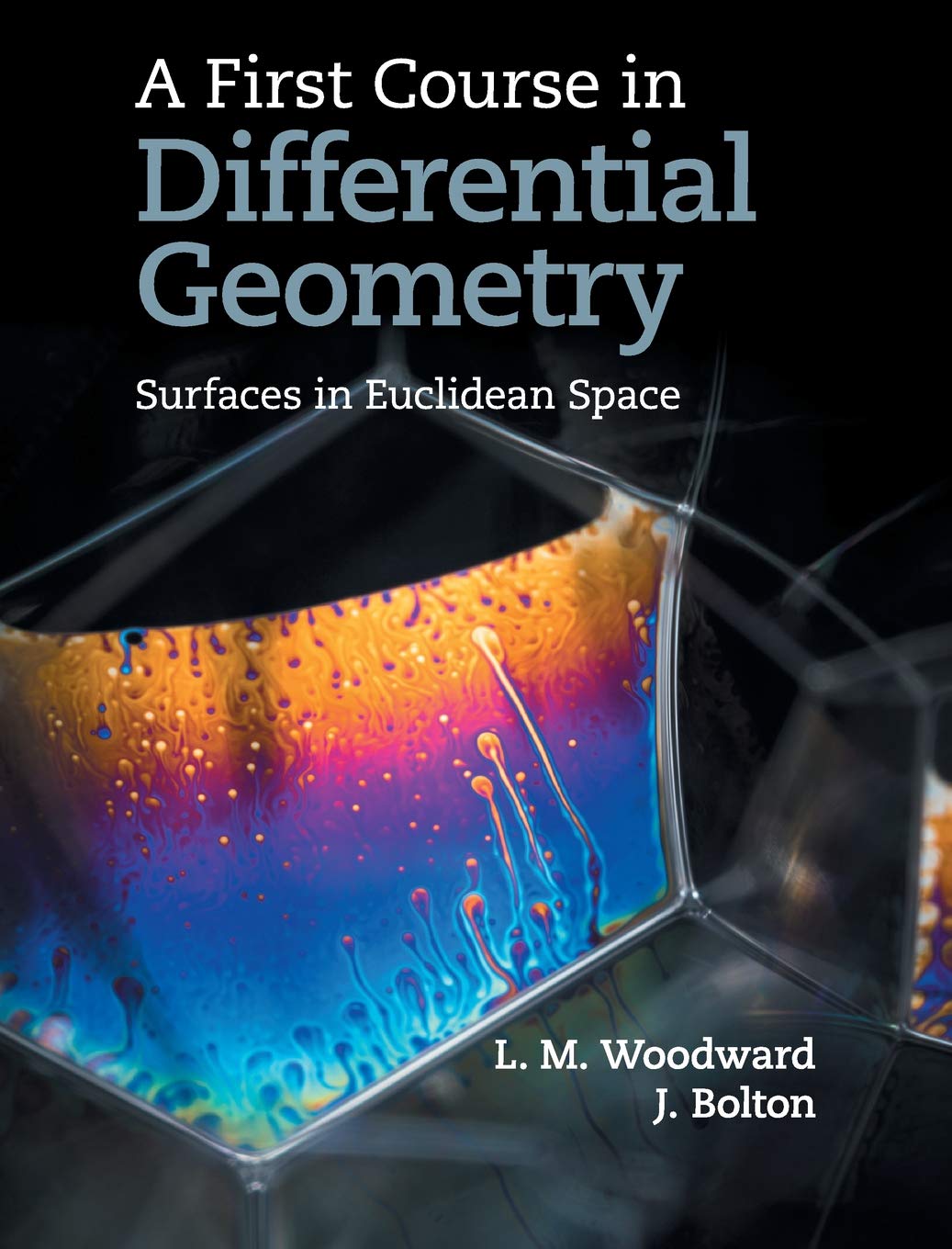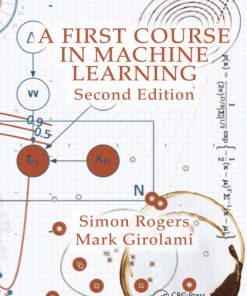A First Course in Differential Geometry Surfaces in Euclidean Space Instructor Solution Manual Solutions 1st Edition by Lyndon Woodward, John Bolton 1108582044 9781108582049
$50.00 Original price was: $50.00.$25.00Current price is: $25.00.
A First Course in Differential Geometry Surfaces in Euclidean Space Instructor Solution Manual Solutions 1st Edition by Lyndon Woodward, John Bolton – Ebook PDF Instant Download/Delivery:
Full download A First Course in Differential Geometry Surfaces in Euclidean Space Instructor Solution Manual Solutions 1st Edition after payment

Product details:
ISBN 10: 1108582044
ISBN 13: 9781108582049
Author: Lyndon Woodward; John Bolton
Differential geometry is the study of curved spaces using the techniques of calculus. It is a mainstay of undergraduate mathematics education and a cornerstone of modern geometry. It is also the language used by Einstein to express general relativity, and so is an essential tool for astronomers and theoretical physicists. This introductory textbook originates from a popular course given to third year students at Durham University for over twenty years, first by the late L. M. Woodward and later by John Bolton (and others). It provides a thorough introduction by focusing on the beginnings of the subject as studied by Gauss: curves and surfaces in Euclidean space. While the main topics are the classics of differential geometry – the definition and geometric meaning of Gaussian curvature, the Theorema Egregium, geodesics, and the Gauss–Bonnet Theorem – the treatment is modern and student-friendly, taking direct routes to explain, prove and apply the main results. It includes many exercises to test students’ understanding of the material, and ends with a supplementary chapter on minimal surfaces that could be used as an extension towards advanced courses or as a source of student projects.
A First Course in Differential Geometry Surfaces in Euclidean Space Instructor Solution Manual Solutions 1st Table of contents:
1 Curves in R[sup(n)]
1.1 Basic definitions
1.2 Arc length
1.3 The local theory of plane curves
1.4 Involutes and evolutes of plane curves [sup(†)]
1.5 The local theory of space curves
Exercises
2 Surfaces in R[sup(n)]
2.1 Definition of a surface
2.2 Graphs of functions
2.3 Surfaces of revolution
2.4 Surfaces defined by equations
2.5 Coordinate recognition
2.6 Appendix: Proof of three theorems [sup(†)]
Exercises
3 Tangent planes and the first fundamental form
3.1 The tangent plane
3.2 The first fundamental form
3.3 Arc length and angle
3.4 Isothermal parametrisations
3.5 Families of curves
3.6 Ruled surfaces
3.7 Area
3.8 Change of variables [sup(†)]
3.9 Coordinate independence [sup(†)]
Exercises
4 Smooth maps
4.1 Smooth maps between surfaces
4.2 The derivative of a smooth map
4.3 Local isometries
4.4 Conformal maps
4.5 Conformal maps and local parametrisations
4.6 Appendix 1: Some substantial examples [sup(†)]
4.7 Appendix 2: Conformal and isometry groups [sup(†)]
Exercises
5 Measuring how surfaces curve
5.1 The Weingarten map
5.2 Second fundamental form
5.3 Matrix of the Weingarten map
5.4 Gaussian and mean curvature
5.5 Principal curvatures and directions
5.6 Examples: surfaces of revolution
5.7 Normal curvature
5.8 Umbilics
5.9 Special families of curves
5.10 Elliptic, hyperbolic, parabolic and planar points
5.11 Approximating a surface by a quadric [sup(†)]
5.12 Gaussian curvature and the area of the image of the Gauss map [sup(†)]
Exercises
6 The Theorema Egregium
6.1 The Christoffel symbols
6.2 Proof of the theorem
6.3 The Codazzi–Mainardi equations
6.4 Surfaces of constant Gaussian curvature [sup(†)]
6.5 A generalisation of Gaussian curvature [sup(†)]
Exercises
7 Geodesic curvature and geodesics
7.1 Geodesic curvature
7.2 Geodesics
7.3 Differential equations for geodesics
7.4 Geodesics as curves of stationary length
7.5 Geodesic curvature is intrinsic
7.6 Geodesics on surfaces of revolution [sup(†)]
7.7 Geodesic coordinates [sup(†)]
7.8 Metric behaviour of geodesics [sup(†)]
7.9 Rolling without slipping or twisting [sup(†)]
Exercises
8 The Gauss–Bonnet Theorem
8.1 Preliminary examples
8.2 Regular regions, interior angles
8.3 Gauss–Bonnet Theorem for a triangle
8.4 Classification of surfaces
8.5 The Gauss–Bonnet Theorem
8.6 Consequences of Gauss–Bonnet
Exercises
9 Minimal and CMC surfaces
9.1 Normal variations
9.2 Examples and first properties
9.3 Bernstein’s Theorem
9.4 Minimal surfaces and harmonic functions
9.5 Associated families
9.6 Holomorphic isotropic functions
9.7 Finding minimal surfaces
9.8 The Weierstrass–Enneper representation
9.9 Finding I, II, N and K
9.10 Surfaces of constant mean curvature
9.11 CMC surfaces of revolution
9.12 CMC surfaces and complex analysis
9.13 Link with Liouville and sinh-Gordon equations
9.14 CMC spheres
Exercises
10 Hints or answers to some exercises
Index
People also search for A First Course in Differential Geometry Surfaces in Euclidean Space Instructor Solution Manual Solutions 1st :
differential geometry a first course in curves and surfaces
a first course in differential equations
a first course in differential equations 11th edition
a first course in differential equations with modeling applications
Tags:
Lyndon Woodward,John Bolton,Differential Geometry Surfaces
You may also like…
Uncategorized
Mathematical Physics with Partial Differential Equations Instructor Solutions Manual James Kirkwood
Uncategorized
Physics - Relativity
Computers - Computer Science
Engineering - Mechanical Engineering & Dynamics
Mathematics - Analysis










